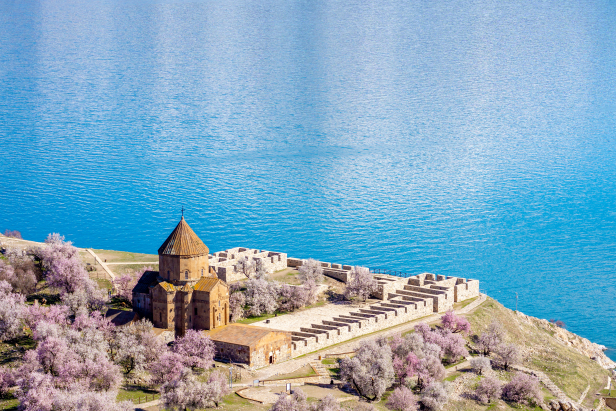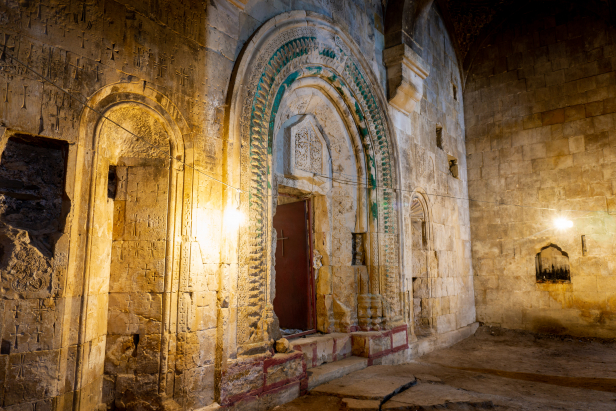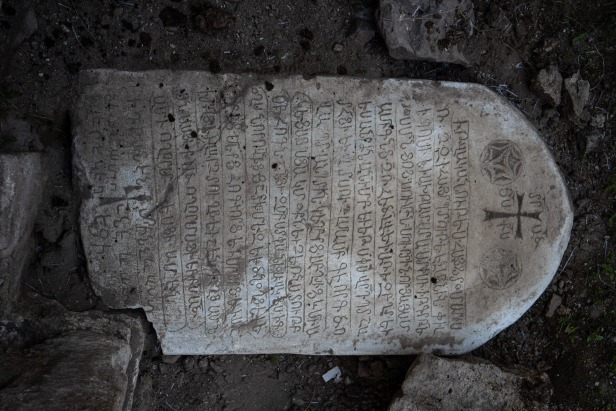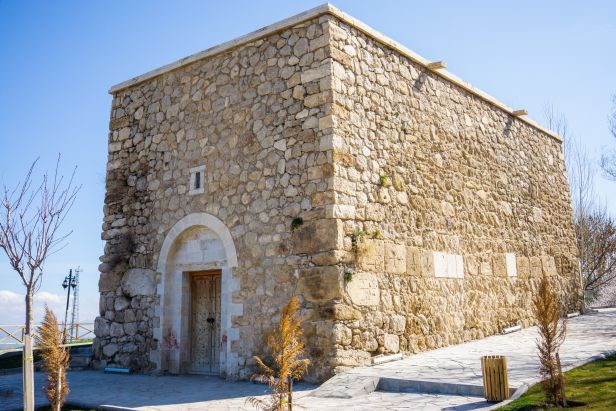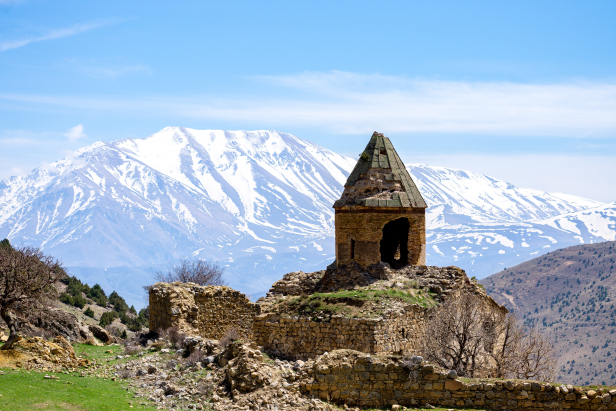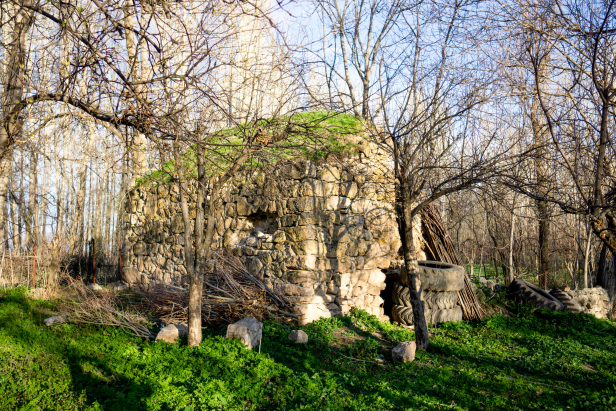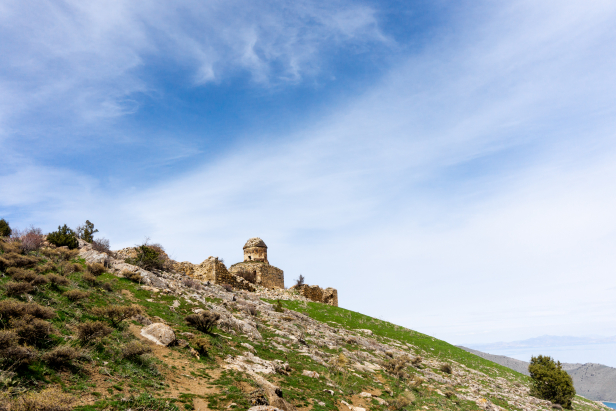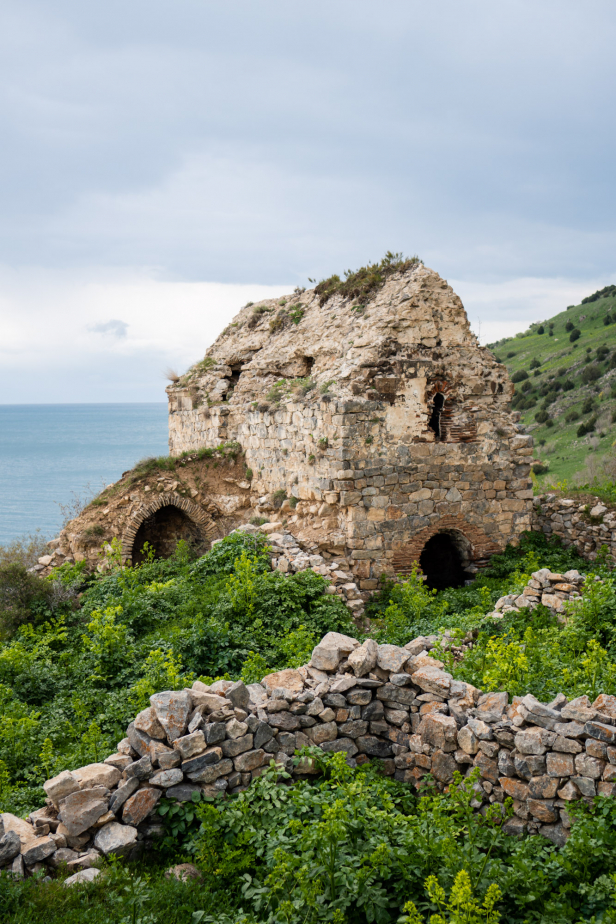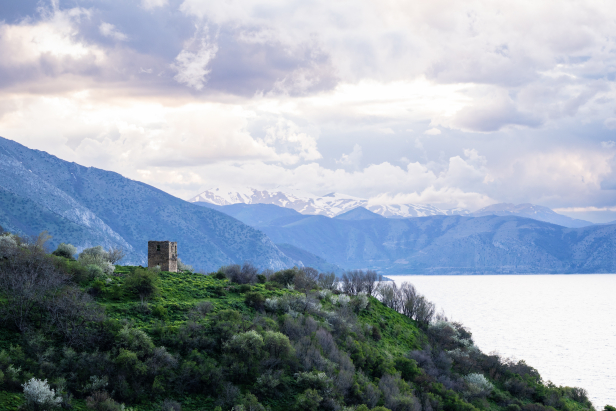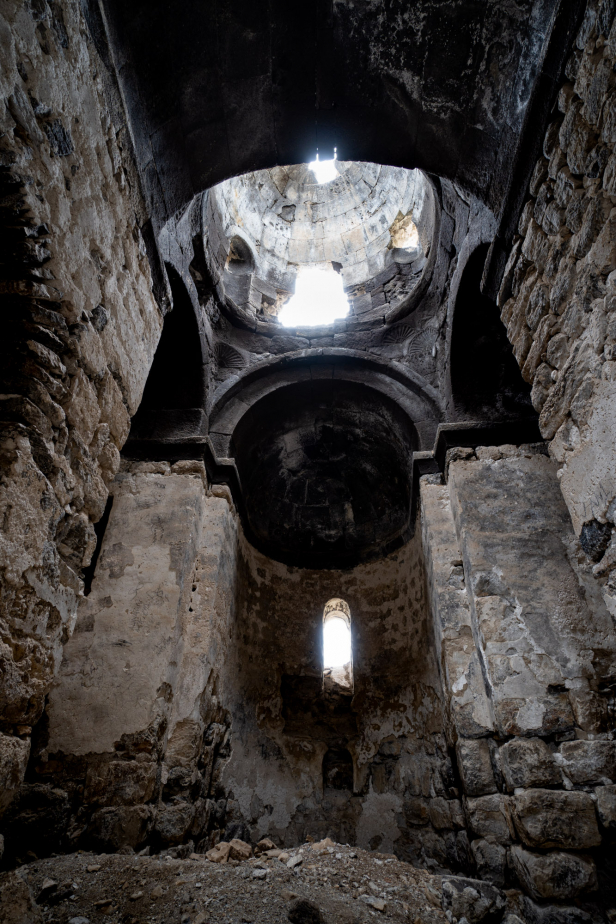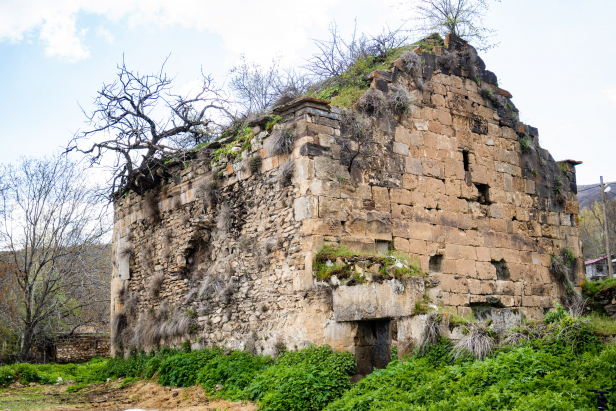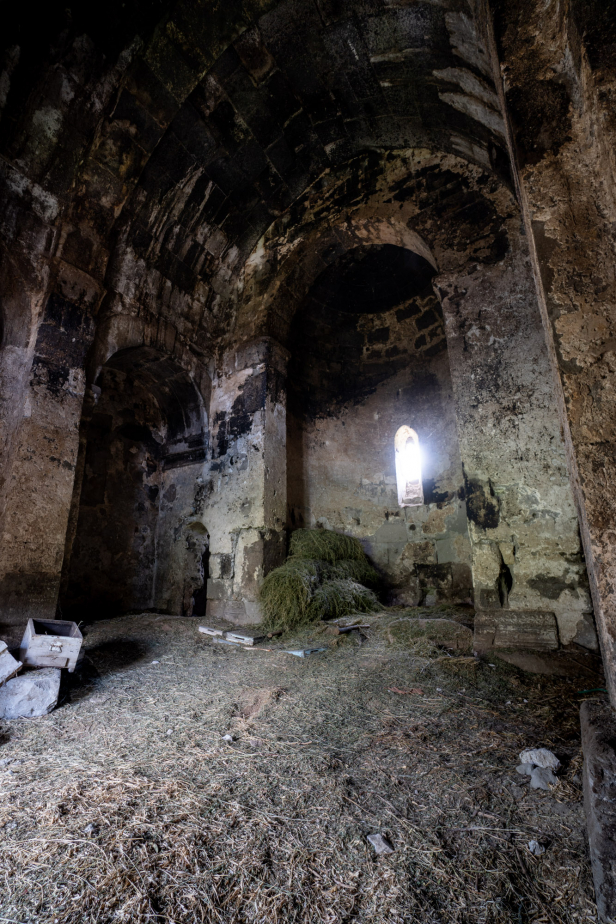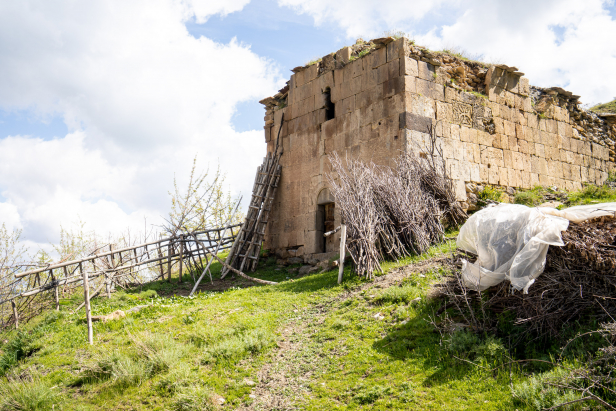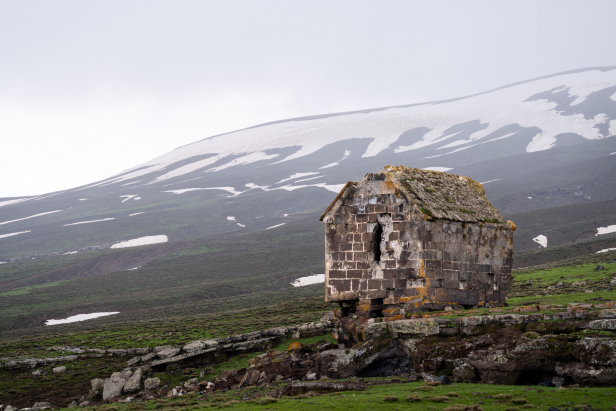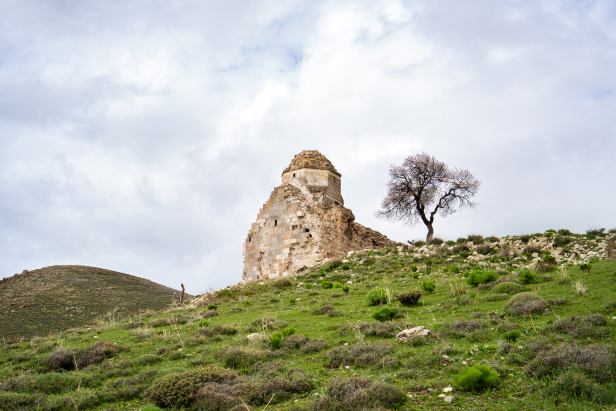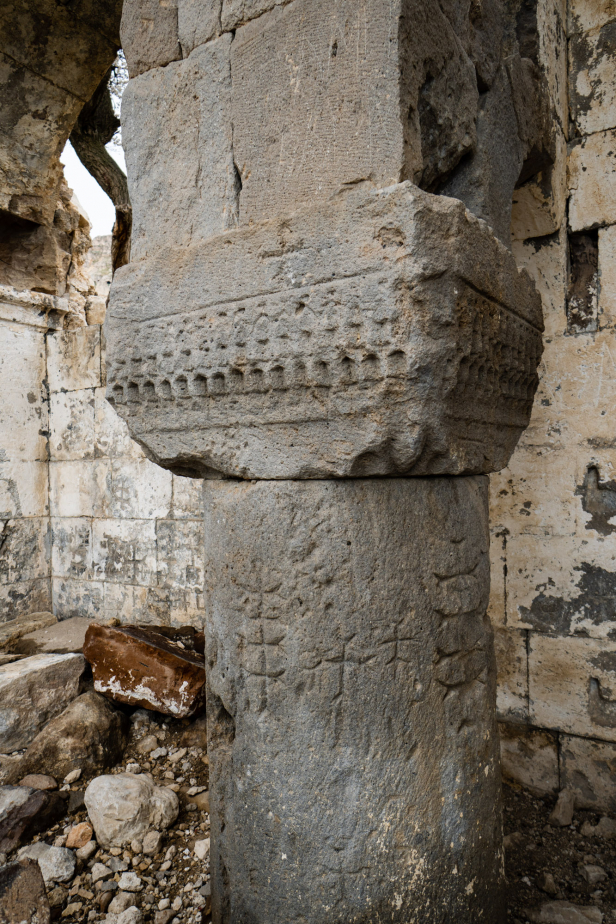Armenian Churches and Monasteries Of Lake Van and Vaspurakan
(Van Gölü Bölgesindeki Ermeni Kiliseler ve Manastırları)
/ By Josh
Cost: Varies
Great for: Armenian History, Churches, Armenian Churches, Monasteries
The region around Lake Van, shared between the modern provinces of Van and Bitlis, was a central territory of the Armenian culture for centuries. As the first nation to officially become Christian, the religion has long been a key part of Armenian identity with a rich religious tradition of liturgy, art, and architecture still to be seen wherever they once lived.
The land that surrounds Lake Van was once a part of Vaspurakan, a province of the Kingdom of Greater Armenia, and later the Medieval Kingdom of Vaspurakan. Its borders and independence shifted over the centuries but at its greatest extent it included both the east and western shores of Lake Van and extended eastwards into what is now Iran and to Lake Urmia. While the borders do not line up exactly this list includes Armenian churches and monasteries that are in Van or Bitlis Provinces today, though they may have been just outside the borders of Vaspurakan.
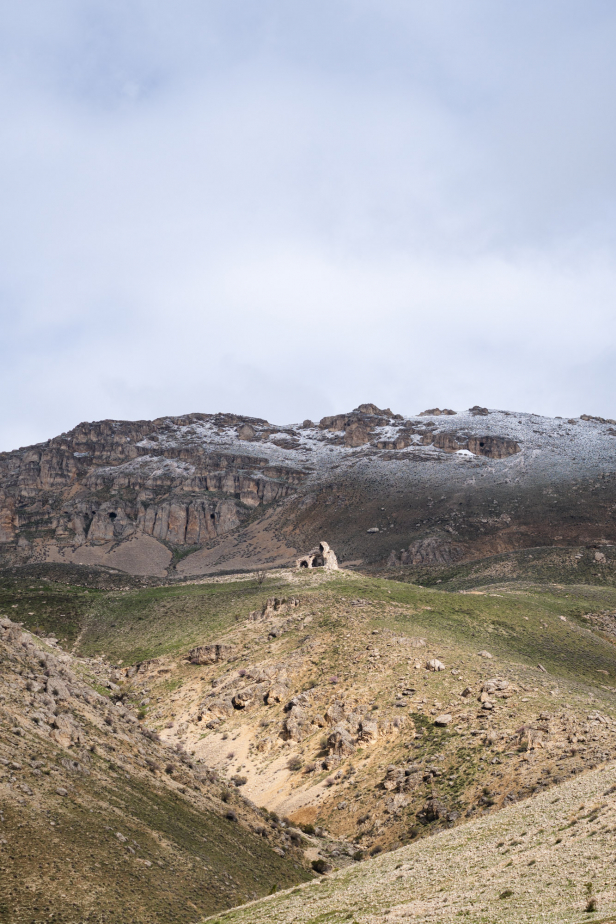
The Armenian Christians built numerous churches and monasteries throughout the region, on islands in the lake, hidden in high mountain valleys, and in the towns and cities. Many of these are in a state of disrepair, some damaged in the violence of 1915, others sunk beneath the waters of lake Van, and others intentionally destroyed. Apart from a handful of better known and advertised sites, many of these beautiful and culturally significant places are virtually unknown.
Even the rare mention of these sites in guidebooks can be full of errors, adding misinformation to the general lack of information.
One list I came across showed 90 churches, chapels, and monasteries, though in reality there were much more. In the short time that I was able to spend in Van I already found others that weren’t on that list.
Subscribe to The Art of Wayfaring
This article is an ongoing list where we will try to share as much as we possibly can regarding the churches, chapels, and monasteries of the Lake Van region. As we visit more and come across new information we will update the page and hopefully help shed light on the incredibly beautiful and under-appreciated Armenian religious history in this region.
If you have any tips or information, please feel free to contact us.
Churches of Van Province
Churches of Old Van – Free
The City of Van was the largest and most important center in the region surrounding lake Van. Growing out of the ancient Urartian fortress city of Tushpa, what is now called the Old City of Van became the heart of the city sometime around 1200 AD, where a number of Armenian churches were built. While the churches here have been heavily damaged and even destroyed, there are some remains still worth visiting.
For more information see our full City of Van Guide
Surp Vardan
The church of Surp Vardan is believed to date from around the 15th century. It was built at the foot of the sheer cliff of Van Castle in the eastern end of the city. Today only the eastern end of the church remains, with traces of geometric painting on plaster covering some of the wall surfaces near the apse. The cliff face just to the north of the church is covered in crosses carved into the limestone.
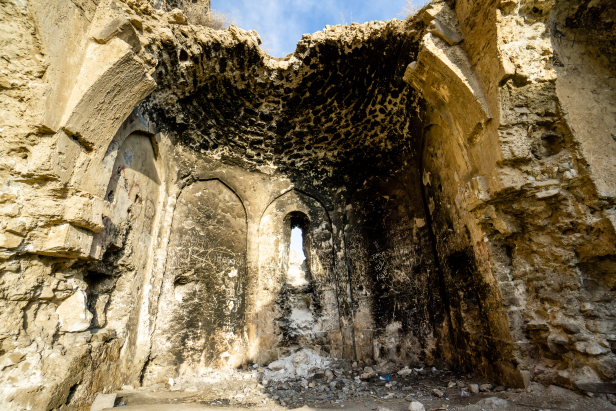
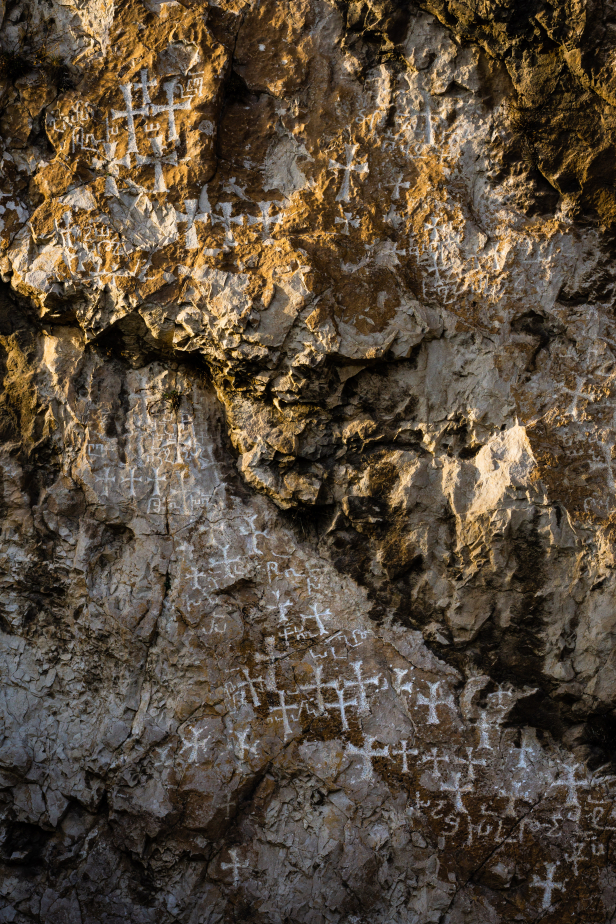
Surp Stephanos
The Church of Surp Stephanos, was built a short distance west of Surp Vardan, also at the foot of the Van Castle cliff. Its construction quality and size is lower than that of Surp Vardan and only a portion of the small brick dome remains. The cliffs here also bear numerous engraved crosses.
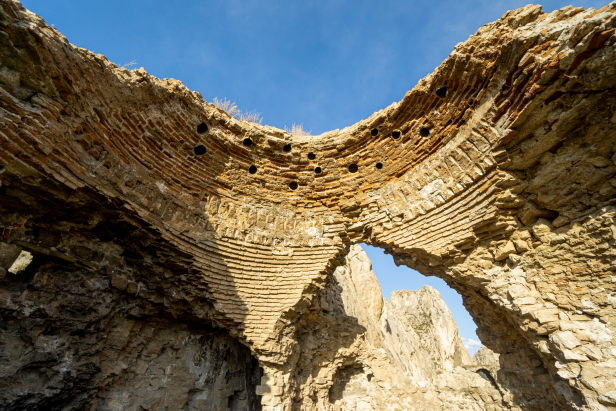
Dsirvanarov Chapel
On the southern end of Old Van, near the restored Kaya Çelebi mosque is the Dsirvanarov Chapel, a small, block-shaped building, recently restored. The restoration seems to have been heavy handed and it is difficult to make out how much of the original structure is there. Sadly, restoration hasn’t been combined with maintenance and the interior is flooded and full of garbage.
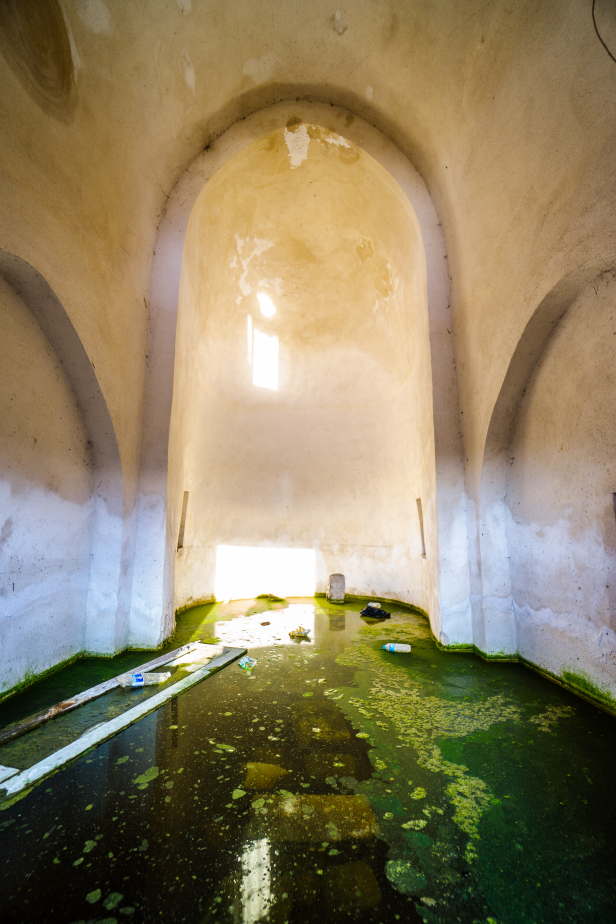
Church of Surp Paulos and Petros (Çifte Kilisesi or “Twin Church”)
This single church dedicated to the saints Paul and Peter is often confused with Surp Stephanos and Surp Vardan Churches as they are “twins” in that they are near each other and relatively similar in appearance today. The Church of Surp Paulos and Petros however, is just south-west of the Kızıl Mosque (the further east of the two ruined mosques with half minarets), and little remains of this historic building.
Beyond these there were a number of other churches and chapels, but they have all been lost.
Lake Van Island Sites
Church of The Holy Cross Akdamar (Akdamar Surp Haç) – 35TL for boat plus 25TL museum entrance fee
By far the most famous and beautiful Armenian church in Turkey, The Church of the Holy Cross on Akdamar Island is the only site on this list that can be considered well known. Set on an Island in the south of Lake Van, Akdamar Island (Aghtamar in the original Armenian) was home to a monastic complex and palace, founded by King Gagik Artzruni in the early 10th century. His chosen setting was stunning and the church he had built there is equally beautiful.
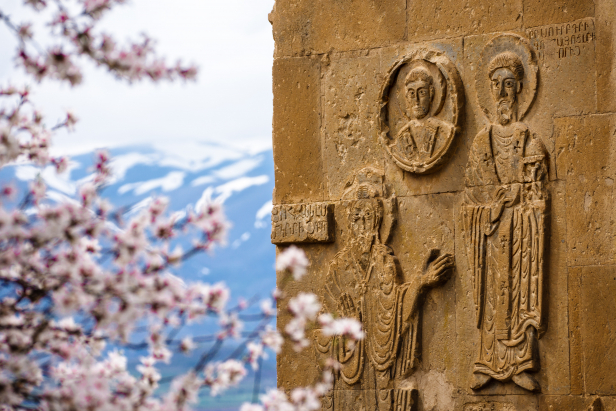
While the complex and palace have been lost, the Church of the Holy Cross (Surp Khach) has survived. The exterior of the 20 meter tall church is covered in bas-relief depicting events and characters from Biblical and Armenian history. The interior frescoes have been restored and the bold colours depict saints and biblical characters on nearly every surface of the church interior.
For more information and directions see our full guide to Akdamar Island and The Church of the Holy Cross.
Arterivank Monastery (Kuş Adası Manastırı) – (Fee of hiring a private boat to the island)
About four kilometers to the west of Akdamar Island is a small bare rock, once known as Arter, though now known as Kuş adası (Bird Island). This islet was once home to a small monastery devoted to the Mother Mary or Surp Asdvadzadzin. There were once two structures here though now only the one simple chapel consisting of a barrel vault and apse remains. Access to Arterivank can be arranged at the ferry docks for Akdamar.
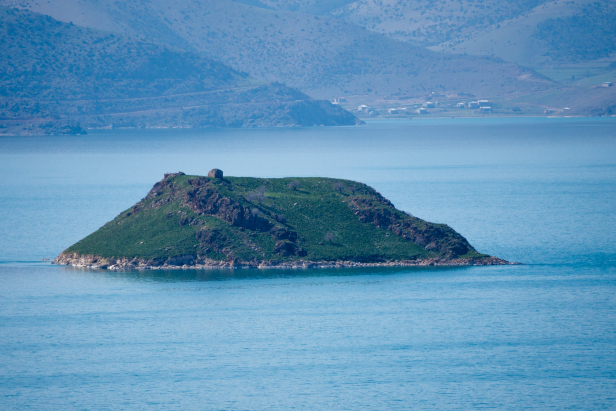
Subscribe to The Art of Wayfaring
Tzipna Surp Stepanos
This monastery was built on a low Island and has now been lost due to the rising level of the lake.
Surp Hovhanna Ktuts (Çarpanak) – Cost of hiring a boat
NOTE: While we have tried, we have not visited this site yet.
On Ktuts Island is an Armenian monastic complex dating back at least as far as the 15th century. The church is named for St John the Baptist (Surp Hovhanna) and the complex often referred to as Ktuts of Gtuts Monastery. Today the island and monastery are more commonly known by the Turkish name Çarpanak, which is off of a peninsula north of the city of Van, near the villages of Alaköy and Çitören.
Access to Ktuts is difficult. In the past local fishermen would take you to the island for a fee, but as of 2019 the police have been cracking down fishing boats cutting into the tour boat sector and handing out heavy fines. Legal access is either by your own boat, swimming, or hiring one of the Akdamar tour boats. The boats running to Akdamar are based out of docks on the south shore of the lake and so the distance is absurd and expensive.
Lim Monastery – Cost of Hiring a Boat
NOTE: While we have tried, we have not visited this site yet.
Lim island (more commonly Adır in Turkish), in the north of Lake Van opposite the village of Halkalı, was home to a sizable monastic community. While much of the complex and the high conical cupolas are ruined, a sizable portion of a building remains.
Like Ktuts monastery mentioned above, access to Lim Island is difficult/expensive. See above for more details.
North Shore Sites:
Surp Stepanos Berkri/Arkelon Vank (Muradiye) – Free
With its lower church picturesquely nestled among the rocks at the foot of a high cliff, the Monastery of Surp Stepanos was a sprawling complex of hermit cells, churches, and other monastic buildings set along the cliff and the plateau above. Sadly, only a small portion of the complex has survived today and both church structures are badly damaged.
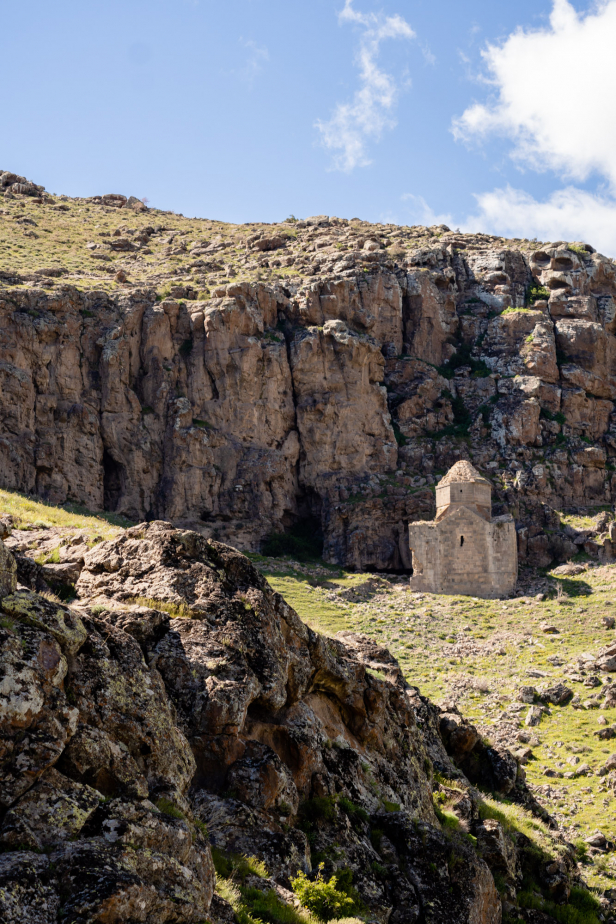
The difficult to reach upper church has been reduced to its nave and fragments of its north and south walls. Scattered stones are a testament to what was once there, though shepherds have used the rocks to build shelters, making it difficult to see what can be dated to the monastery and what has been rearranged more recently. The lower church at the foot of the cliff is in better condition with its peaked dome in fair condition.
For more read our full guide to the Surp Stepanos Berkri and Arkelon Vank.
Ardzvaber / Surp Astvatsatsin (Salmanağa Kilise) – Free
Located off the northern end of Lake Van, there is little remaining of the monastery of Ardzvaber. The central church, Surp Astvatsatsin (Mother of God), is all that is left standing though nearly all of the roof has now collapsed and only a small portion of the outer facing stones are left in place.
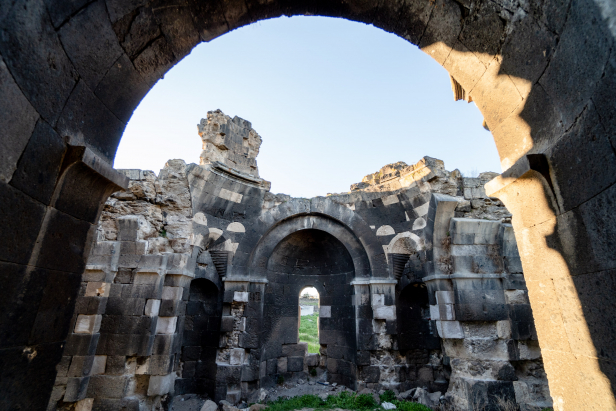
Built in the style of St Hrispime Church in Armenia, the church at Ardzvaber is is a form of tetraconch cruciform. While the church itself is built in a style common of the Armenian architectural tradition, it holds a unique surprise. In the north-east sacristy a cuneiform covered basalt stone has been used as a lintel. The stone belongs to the Urartian Kingdom, an early Iron Age culture centered around Lake Van.
For more about the Ardzvaber Monastery, its history, and the Urartian Stele see our full article.
East Coast Sites:
Varagavank Monastery (Yedi Kilisesi) – Varies (price seems to fluctuate based on the mood of the warden)
One of the better known churches on this list, The Monastery of the Holy Cross of Varag is one of the larger remaining Armenian Churches in the region. While there were once seven churches here, there are still significant remains of four plus a large section of the apse of a fifth. The monastery was founded to house a particularly important relic in the Armenian tradition, and, likely due to the prestige of this relic, grew into a beautiful complex.
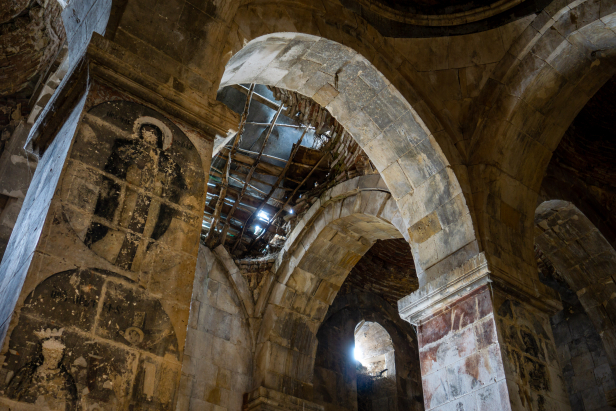
While the history of many churches and monasteries in the Lake Van region is usually quite murky, the legends surrounding the founding of the monastery and much of its history is relatively well known. This combined with the relatively well-preserved state of the complex makes it one of the more fascinating destinations on this list.
For more information and directions see our full guide to Varagavank Monastery
Salnabadi/Salnapat Surp Grigor Vank – Free
A short drive from the modern city center of Van, up onto the lower slopes of mount Varag (modern Erek) you can find the remains of Surp Grigor Vank. The site is above the village of Kavuncu, on the road to Bediuzzaman Mosque, near the village of Sarmaç.
The monastic complex consisted of two relatively large churches, each domed, as well as other monastic buildings enclosed by a wall. The churches of the Monastery of St Grigor were named Surp Asdvadzadzin and Surp Karapet.
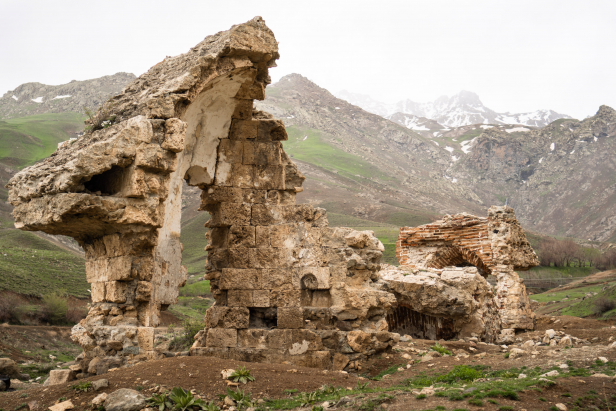
Today almost nothing remains of the the monastic complex and the churches have been reduced to a few standing fragments and a heap of rubble. A single apse and corner remain though these too have been severely undermined by deep pits dug by looters. What little remains today will likely not remain standing for long. You can easily make out where the enclosing walls once stood, though they have been reduced to a long rocky heap.
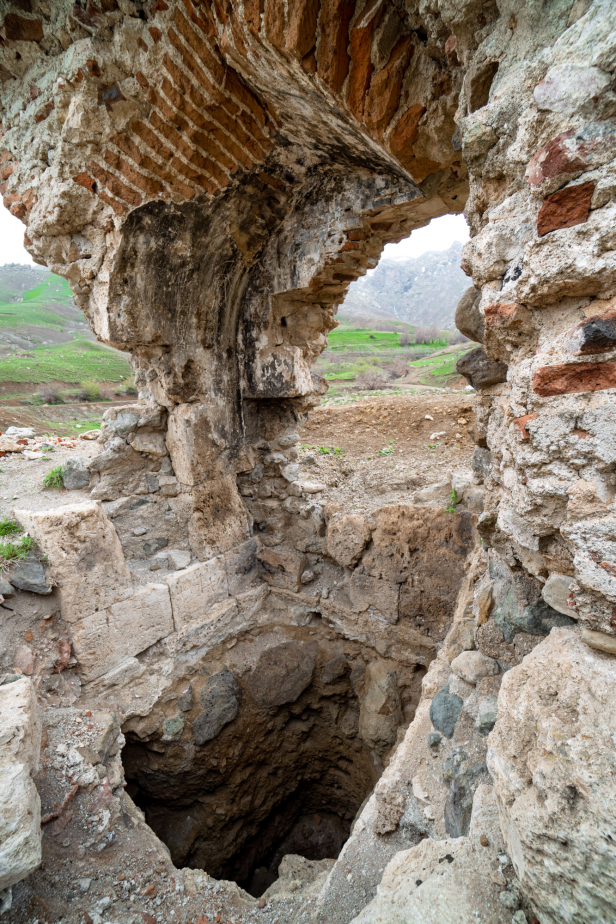
Surp Sahag of Ererin/Irerin – Free
The monastery of Surp Sahag, dedicated to St Isaac Bartev (a late 4th century Patriarch of the Armenian Apostolic Church) once occupied a spur of rock above the village of Dağönü (historic Irerin/Ererin). The small monastery once housed relics of the Surp Sahag, from which it got its name. Around 1840 the relic was moved to the nearby island monastery of Lim and Surp Sahag was abandoned.
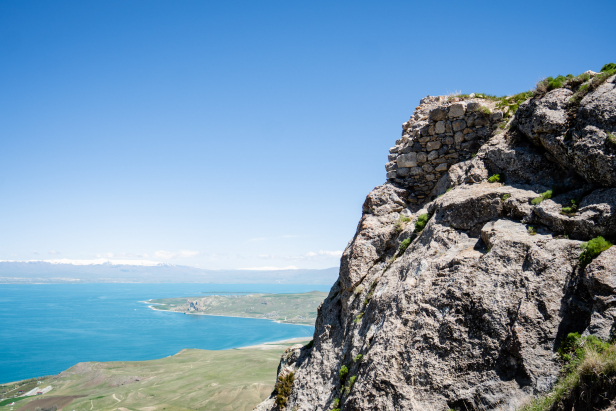
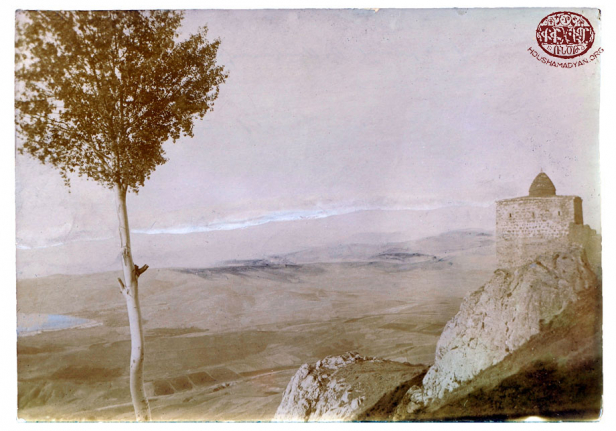
After nearly two centuries of abandonment and looting, only faint traces of this little known monastery remain. A small corner of supporting masonry is still in place. There is also said to have been a shrine to St Gregory the Illuminator (Surp Sahag was a direct descendant of St Gregory the Illuminator) on the top of the mountain where legend says Gregory lived as an anchorite. No trace of a mountaintop shrine remains today beyond a large quantity of potsherds which may or may not be related to the Christian shrine. Considering how common mountaintop shrines were in the Bronze and early Iron Ages its just as likely that the pottery dates back to an earlier period.
The village of Dağönü was once home to a pair of churches dedicated to Surp Hovhannes and the other to Surp Stepanos, though no trace of either remain today.
While there is a rough tractor road up the mountain from the village of Dağönü you will need a vehicle with some extra clearance to make it to the ruin. The tractor road is 2kms long and is accessed off of the main road just east of the village of Dağönü which is located on the east shore of the lake, west of the Van-Erciş highway.
Church of Surp Astvadzadzin of Noravants (Now Esenpınar) – Free
The village of Esenpınar, known as Nurevans by the current Kurdish inhabitants, was originally called Noravants by its Armenian population meaning “new dock or harbour”. On the edge of the village is what remains of the church of Surp Astvadzadzin, a large church with a relatively simple single-nave basilica layout. The masonry walls remain and though the roof has collapsed it appears to have been a barrel vault supported by a rib running from pilasters in the north and south walls. It is possible, though unlikely that there was a dome over this particular church. A spacious apse with a single narrow window occupies the full width of the east end of the church. Set in the walls are some fine engraved stones and niches though overall there is little ornamentation.
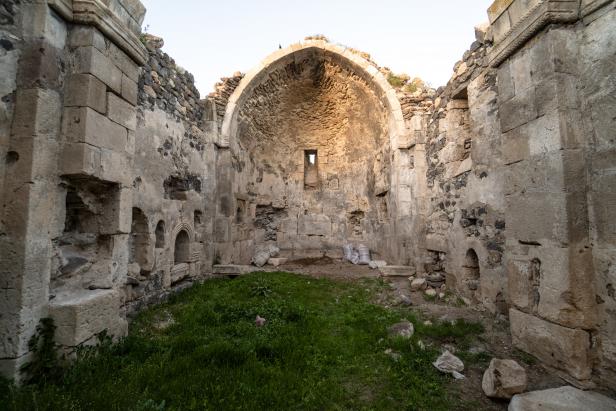
What little we know about the history of this church comes from an engraved dedication stone that had been set in its walls until it fell or was removed in either 2021 or 2022. According to the inscription the church was built in 1636 during the reign of Sultan Murad while Philipos was Patriarch at Etchmiadzin and Stephanos was Patriarch at Akhtamar (Akdamar). The 1636 date would mean that the Sultan Murad of the Ottomans mentioned in the text was Murad IV who was active in the region of Van where the Ottomans were at war with the Safavid Persians.
There is still the possibility that the inscription refers to an older church and the church building we see today was built to replace an older/original church. The design with its generous floor space and quality of masonry compared to lack of ornamentation is akin to the later built churches of the 18th and 19th centuries.
A barn has been built against the north wall which, though it undermined the historicity, will hopefully help support the structure. The interior of the church is surprisingly tidy and lacking in pits and rubble.
The Church of Surp Astvadzadzin of Noravants can be found on the upper edge of the village, near the dirt road leading to Halkalı (historic Khjishg).
South Shore Sites:
Edremit Church (Kız Kilisesi) – Free
Little is known about this small church. Even its name is unknown. Referred to as Kız Kilisesi (Maidens Church) by the Turkish speaking locals, this name actually comes from the nearby viewpoint that is believed to have once been the site of a small castle.
The church at Edremit (derived from the Armenian Artamid) is a simple rectangular structure with a barrel vault ending in a semi domed apse. The western face had completely collapsed and has been rebuilt in a way that is unlikely to be historically accurate. The Khachkar stones (cross-carved memorial stones) in the side of the church have been set sideways; exactly why they have been set this way is unclear, though it predates the most recent restoration by many years. Some of the stones with sideways crosses have other crosses, presumably added later, that are upright, which would suggest that other crosses were added after the stove was set sideways.
This church can be found near the center of the Town of Edremit, just a short distance to the west of Kız Kalesi, or The Maidens Castle, sometimes also referred to as Edremit Castle. While there is signage to the church, they aren’t overly clear.
Narekavank/Naregavank – Free
The monastery of Narekavank was one of the regions most celebrated. It was a large monastic complex at the center of a village and, in its latter days, was home to a school and orphanage. At its heart though, were a pair of fine churches with tall pyramidal cupolas: the church of Sanducht and the church of Surp Asdvadzadzin. Surp Sanducht was fronted by a sizable zhamatun (narthex) and three storey bell tower.
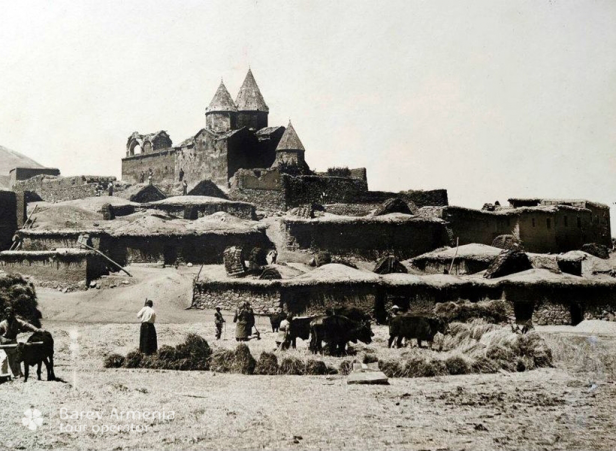
The monastery is one of the older ones in the region, established by King Gagik I of Vaspurakan near the beginning of the 10th century. Later, towards the end of the 11th century Narekavank was home to the poet and theologian Surp Grigor Narekatsi (St Grigor of Narek) whose works are still used and celebrated today. The mausoleum of St Grigor was also a prominent feature of the monastic complex.
A photograph taken by Yervand Lalayan in 1911 shows Narekavank sitting atop a high hill above a village of flat roofed stone houses and barns. The octagonal pyramid roofs of the churches are shown with a third, smaller pyramidal cupola against their east wall. The bell tower had already lost its pyramidal roof.
Shortly after Lalayan’s visit the monastery was abandoned, the Armenian inhabitants of the village and monastery were killed or forced to flee in the pogroms of 1915. The building survived until 1951 (some source suggest 1948) when the monastery was demolished. It was in 1951 that Khtzkonk Monastery is said to have been destroyed and Surp Khach on Akdamar Island was slated for demolition, lending weight to this date.
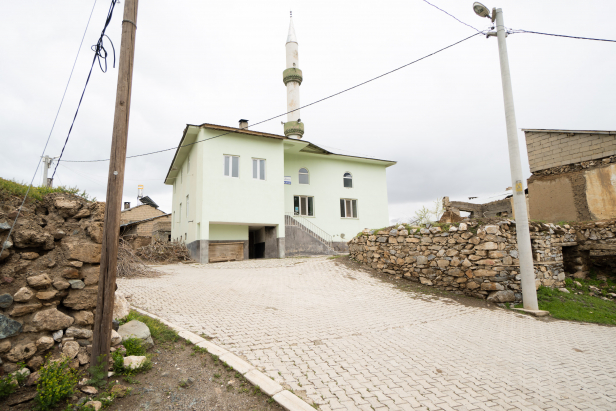
Today nothing remains of the monastery of Narekavank and a mosque has been built on its site. The site can be visited in the village of Yemişlik, known to the current Kurdish inhabitants as Narik, after the original Armenian name Narek. Yemişlik is just south of the village of village of Akdamar.
Karmravank Monastery (Karmravank Göründü Manastırı) – Free
Karmravank Monastery, near the village of Göründü, is a 10th century monastery complex attributed to King Gagik I. Its location is hidden in the curve of a valley above the lake, and not accessible by car unless you have something with decent clearance, making it a rather less visited site.
The complex consists of two churches, built side-by-side in relatively fair condition. The cupola of the primary church is still standing in fair condition atop the ancient church. Walls enclose the complex, though the other buildings are completely destroyed.
For more information and directions see our full guide to Karmravank Monastery.
Göründü Village Church (Göründü Köyü Kilisesi) – Free
On the southern edge of the village of Göründü (historically known as Mihrapet/Mohrapert by the then Armenian population) is a small village church. There appears to be no information on the history or name of the church. The church, like Dsirvanarov Chapel, and Edremit Church, is a simple barrel vault and apse with a handful of crudely etched khatchkar in the exterior walls. The right-hand corner of the western (entrance) façade has been broken through, but the building is otherwise structurally intact.
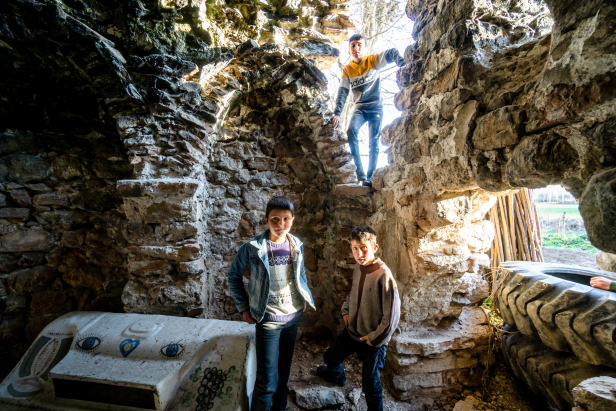
St Thomas Monastery (Altınsaç Surp Tovmas Manastırı) – Free
Centered on the impressive church of Surp Tovmas (st Thomas) this monastic complex was built sometime in the 10th or 11th century to house a relic of St Thomas. The church and its narthex are still in fair condition and stand on the brink of a high outcropping overlooking a wide bay and the strange undulating peninsulas of the coastline. The walls and outbuildings of the complex have been almost entirely destroyed, though it’s still easy to make out the general plan of the complex. Just uphill from the monastery itself is a graveyard full of finely carved Khachkar gravestones. While the graves have been dug up and looted, many of the stones have been preserved.
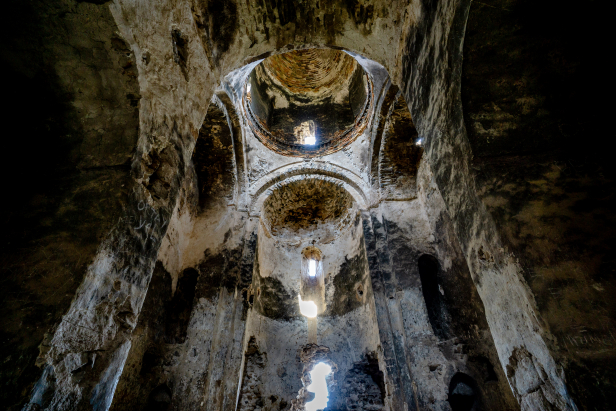
The Monastery of St Thomas is just beyond the village of Altınsaç on the coastal road, overlooking the next bay. After coming down into the bay follow the dirt track up to the left.
For more information and directions see our full guide to St Thomas Monastery
Altınsaç Village Church (Altınsaç Köyü Kilisesi) – Free
The village of Altınsaç, originally Kantzag in Armenian, was once home to a few small churches. One was reportedly torn down in recent memory, though another double-church structure remains, if rather altered and damaged.
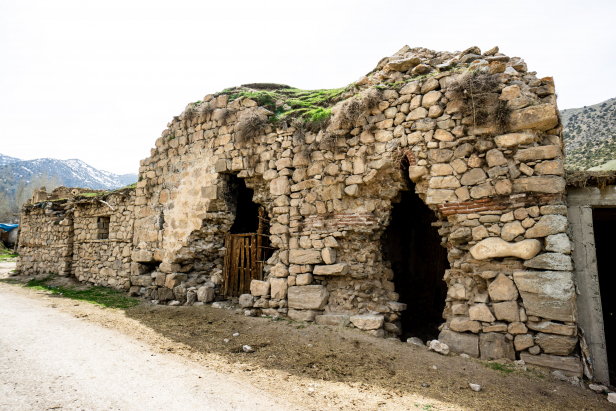
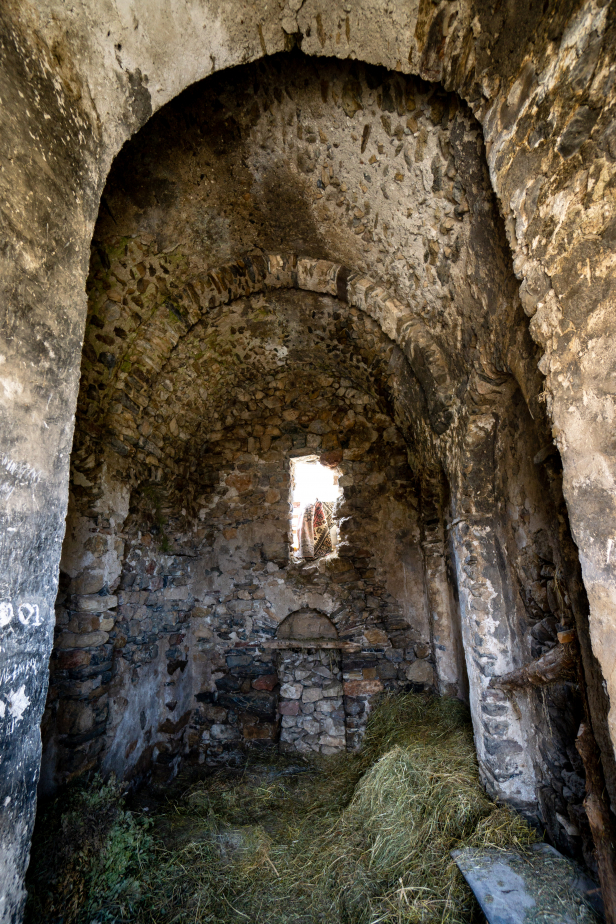
The remaining church sits at the junction in the center of the village across from the fountain used to water animals. The eastern apse wall has been torn open, either to make a door into the street or in search for treasure. The church is now used as a hayloft. While damaged, it is being held up in part by concrete posts that were added to give more barn space to the church.
Many guides will refer to St Tovmas as Altinsaç Church despite the fact that there are other churches that are actually in Altınsaç.
The village of Altınsaç can be found by turning north off of the Van-Bitlis Highway at the village of Göründü and following the road along the lake northward.
Tivapuyn/Surp Harutyun – Free to hike, price of a ferry from Gevaş will have to be negotiated
The church of Surp Harutyun, or “Holy Resurrection” is a remote monastery built at the end of the Tivapuyn peninsula (Turkish Deveboynu) that is juts northward from the south shore of Lake Van. From the village of İnköy where the road ends, it’s a nearly 8-kilometer hike to the monastery site along the narrow and picturesque peninsula.
The oldest known mentions of the monastery date back to the 13th century, though it was likely built long before then, possibly in the 10th century. Inscriptions on the church record restoration work undertaken in the 15th century.
The monastic complex was built around a pair of churches built side by side with other monastic structures built close by on the relatively flat space above the waters of Lake Van. The zhamatun (narthex), smaller church, and outer buildings are all in ruins with only the lower portion of walls sticking out above the weeds. The apse of the lesser church, built against the wall of the larger is still standing though its nave has collapsed.
The main church is fairly large for its architectural style and remote location. It consists of a long, barrel vaulted nave running into a deep-set apse with a single window high above the altar floor. The nave is flanked by triple arches on each side. the arches are deep, making for niche-like spaces on either side. As is common with many Armenian churches (the exception usually being the smallest single nave churches) there is a pair of chambers on either side of the apse entered through the nave, under the supporting arches.
The church roof is in poor condition with deep holes opened from the outside. To date these holes have not yet broken through the inner vaulting.
Surp Stepanos Nakaravank – Free
Overlooking Lake Van with a view in the direction of Surp Gomkivank and the mountain-ringed Çanakdüzü plain (see below) the Surp Stepanos (St Stephen) monastery is a remote ruin with only the heavily altered church still remaining.
The church was built to a small and simple design similar to many of the other village churches in the region. Its design is a simple barrel vault ending in a round apse. As is common with Armenian design the circle of the apse is hidden from the outside which is strictly rectangular. The vault is supported by ribs rising from crude pilasters in the walls.
Today a massive pit occupies the floor of the little church and an upper room has been added to the top. According to a local I spoke to, his grandfather (though possibly just “forefather”) added the room to be used as a seasonal cabin by the shepherds, farmers, and foragers who would frequent the fertile spot. Photos from 1975 by Jean-Michael Thierry show the upper room with its flat roof still in use. Looking closely at the masonry on the east and west walls you can still make out where the original peaked roofline ends and the added masonry begins.
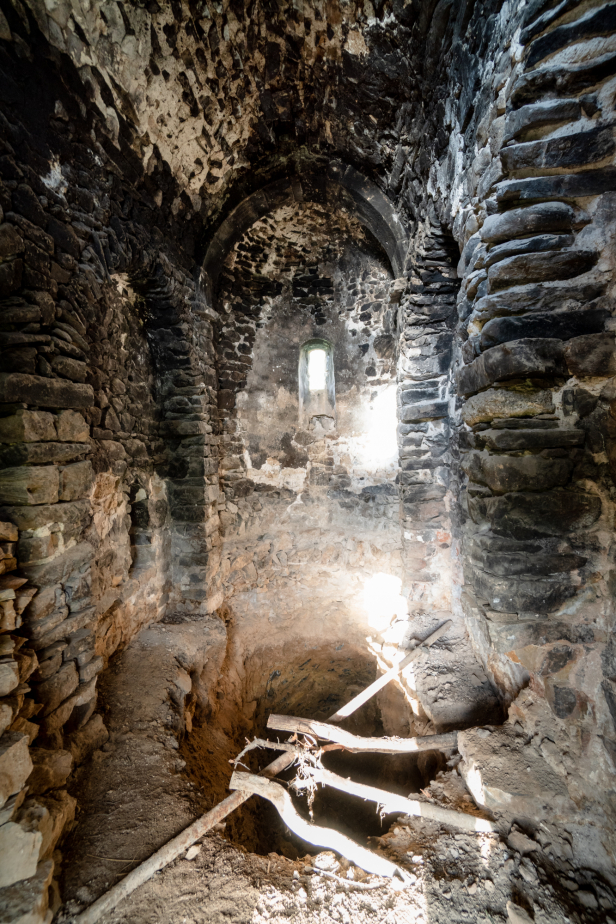
While it is difficult to make out when the weeds are thick, there was once a gavit/zhamatun in front of the church entrance though this has since disappeared. The area surrounding the church speaks to the size of the monastic community that was once here. There are a large number of gravestones just to the east of the church above the road, though these have all been overturned and desecrated. The monastery sits amidst a sizable patch of workable land which locals still used until recently. Now the fertile land here is mostly used by shepherds and foragers looking for mushrooms, herbs, and other wild foods.
This is one of the more remote sites on this list and difficult to access. The village of İnköy can be reached by a narrow, paved road that runs north from the Van-Bitlis highway (D300). From the village of İnköy take the only road west from the village up to the top of the pass from which you will see the lake below you. From there you may be able to spot the church far below you to the left. While the road runs directly past the monastery, the road is very rough and impassible for a normal car.
If you stop and ask the locals for directions they may send you to the above mentioned Tivupuyn Surp Harutyun monastery, so ask for Ağın Mezrası which is the name they will know the site by.
Hayots Dzor and Metsn Zav Valleys:
Note about the Hayots Dzor
The south-east corner of Lake Van is a wide flat territory consisting of a delta made by the Khoshab (Turkish “Güzelsu” – the Turkish, Armenian, and Kurdish can be translated as “Beautiful Water”.) The Khoshab river passes through alternating areas of dry desolate rock and lush valleys along its course with villages and castles dotting its banks. Two of the highlight sites are the Hoşap (Khoshab) Castle and the remains of Çavuştepe. Çavuştepe in particular is important in Armenian history. Known as Haykaberd, or “The Fortress of Hayk” in Armenian, it was said to have been built by Hayk, the legendary father of the Armenians, near the site where he defeated Bel and his Babylonian army.
Surp Marinos Monastery – Free
In the lower reaches of the Hayots Dzor, a broad and fertile area, the Monastery of Surp Marinos is situated in an unusually barren slope overlooking the valley below. The construction of the complex is unusual, consisting almost entirely of unworked flat stones loosely fitted with mud and straw for mortar.
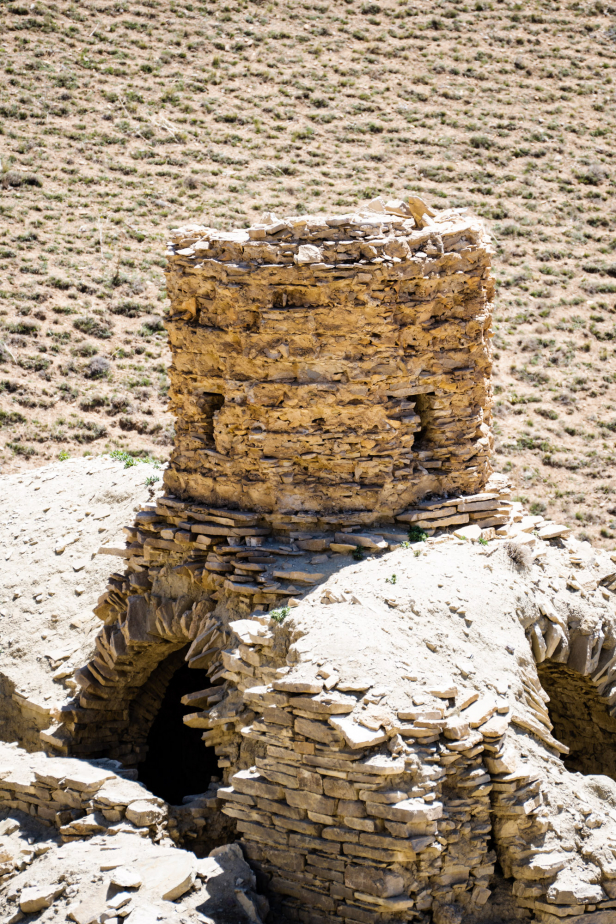
Between the damage made by looters and the erosion of this poor mortar, the church is in poor condition and deteriorating at an alarming rate. Most of the monastery’s complex has disappeared and the church at its center is in danger of collapse.
For more about the history and layout of the monastery, see our full guide to the monastery of Surp Marinos.
Dönemeç Village Church – Free
The village of Dönemeç (just off of the Bitlis Hakkari highway south of the city of Van), historically known as Ankgh and Engil to the former Armenian inhabitants, was once home to a handful of churches and a monastery. Just east of the village are the remains of two buildings that the locals say were churches. Unfortunately, there are no obvious markings such as crosses or inscriptions to point to the identity of the site. In fact, its difficult to be certain that the buildings are even churches. The quality of the masonry, the “V” shaped niche windows, and the way in which the two buildings stand side by side suggest that they could be churches (see altınsaç church, and Kamravank Monastery for nearby examples of this).
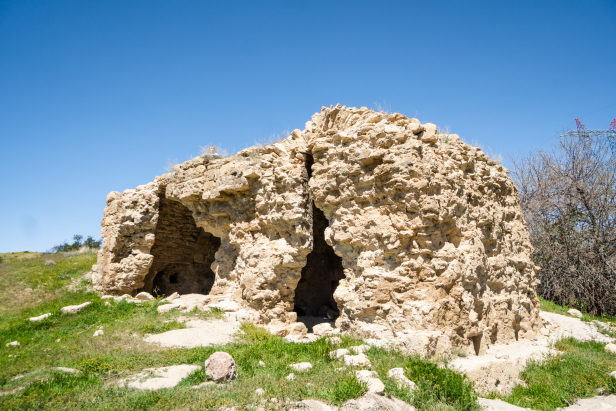
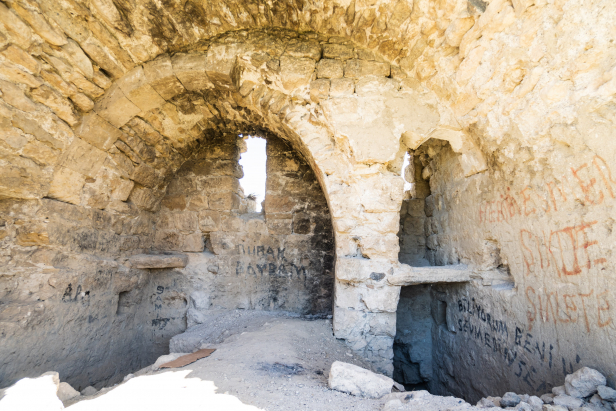
What casts doubt on this identification is the fact that the structures face east-north-east rather than east, and that the interior layout is so confused. The east wall of the south structure is is divided into two narrow vaults with a supporting square pillar of masonry in the middle of the wall. The windows open awkwardly off-center from under these arches. In this same space the fine niche window is set in the center of the west wall, though due to the damage it is difficult to tell if there was a doorway below the window.
In the building on the north side the situation is similar. The west wall has almost entirely collapsed, though as there is no other visible entrance, it can be assumed that the doorway was here. The east wall is awkwardly divided into two apses by a pair of misshaped vaults, one spanning most of the width of the room and the other seeming like an awkward afterthought.
Records show that the village of Dönemeç was home to three churches; Surp Sarkis, Surp Dziranavor, and Surp Gevorg. Whether or not this building described above is one of these is not entirely clear.
The waterfall on the Dönemeç Stream (just below the ruin) is well worth a visit, especially if you visit on a hot summer day.
Note about the Metsn Zav Valley
The name Metsn Zav is Armenian for “The Great Zab”(or Çataksuyu in Turkish), a river that rises on the Turkish-Iranian border and flows south past the city of Hakkari and into Iraq where it joins the Tigris river near Erbil. In Hakkari province, just to the south, the Zab river cuts its way through the mountains via a narrow canyon made barely passable by a modern road. In the north, nearer the rivers source the Great Zab flows through a high, though broad and fertile valley.
St Bartholomew Monastery / Surp Bardoughimeosi Vank / Albayrak Kilisesi – Free
In this long list of beautiful religious monuments, the monastery of St Bartholomew stands out as one of the grandest in both size and design. In the architectural tradition of Armenian Vaspurakan, a grander church is not typically a larger church but rather a taller church; one consisting of high conical domes above relatively limited interiors. The Church of St Bartholomew is a clear break from this tradition and is remarkably broad and spacious, hiding the hallmarks of the Armenian architectural tradition within a massive rectangle of masonry.
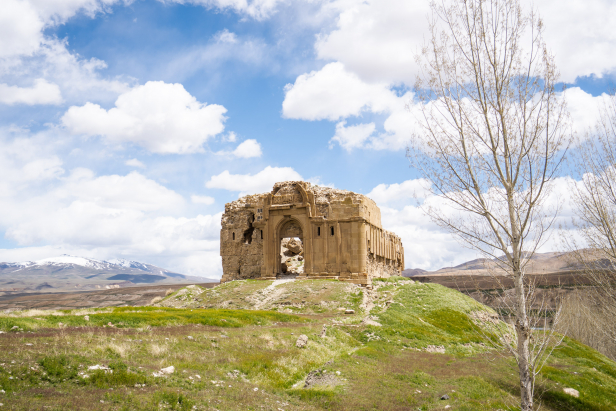
While the monastery has suffered heavy damage with the collapse of its domes and the destruction of its outbuildings it is still an impressive sight.
For more about its history and condition read our full guide to the Monastery of St Bartholomew.
Surp Khach Aghpag / Yanal Kilisesi – Free
Believed to have been established as far back as the 9th century, the church of Surp Khach (Holy Cross) sits in what was the Armenian village of Sorader. Once a much larger town, Sorader was the home of the Artsruni’s, an Armenian noble family that ruled over the Kingdom of Vaspurakan during its time of independence.
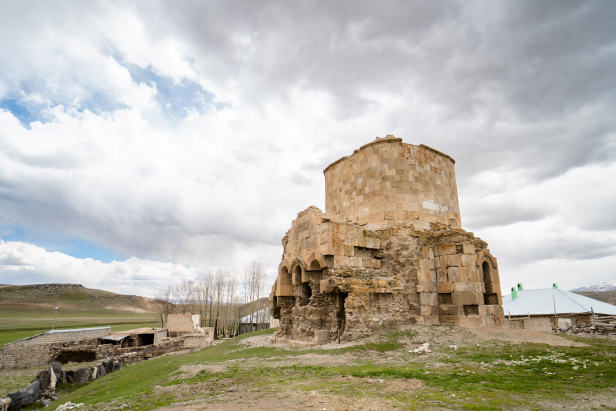
Today the church of Surp Khach is all that remains of the history of the site. The church however is a rather impressive oddity well worth visiting despite how far off the beaten track it sits. The design is nearly identical to the Surp Khatch church on Akdamar Island. The only significant change is that in the place of the more conventional cone-topped drum Surp Khach Aghpak uses a large square vault, making for a beautiful interior though a rather strange top-heavy appearance on the exterior.
For more about the Artsruni Family and the sites at of the village of Sorader read the full guide to the church of Surp Khach of Aghpag.
Churches and Monasteries of Bitlis Province
Gomkivank/Surp Gevorg – Free
Built just above the shores of Lake Van, Gomkivank is a fine example of the domed cruciform, bearing the hallmarks of the region’s Armenian architecture. With the church of Surp Gevorg (st George) at its heart, Gomkivank was a monastic complex enclosed by a wall of rough stone masonry with a long patch of farmable land built into the hillside to the west of the complex. While in poor condition, much of the enclosure walls are still standing. Unfortunately, the interior is choked with rubble, making it difficult to make out the exact layout of the complex’s secondary buildings. The door appears to have been in the northwest corner.
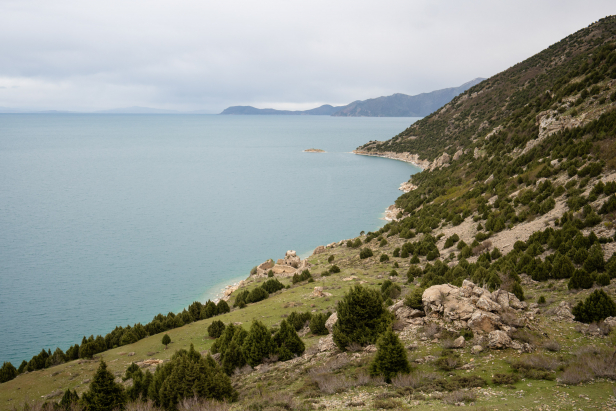
From the exterior the church is a simple domed rectangle of pale stone with darker basalt used for the more artistic elements. Inside the church is laid out as a cruciform with the apse, transversal arms, and long hall radiating from the central dome. The drum of the dome is irregularly shaped rather than circular and rests on four basalt squinches, carved with three scallop shells each.
Much of the stone roof has fallen out of place and the conical roof of the dome has completely fallen away, allowing water to get at the mortar within the walls which will in turn speed the process of decay. However, the greater risk may lay just to the north of the complex where the slowly rising water levels of Lake Van have caused the hill to erode and now threaten to undermine the outer wall.
For more details and directions to the site see our full guide to The Monastery of Surp Gevorg.
Surp Sarkis/Göllü Village Church – Free
The village of Göllü sits in the midst of the Göllü Plain, a roughly triangular flat of tilled fields hemmed in by a ridge of mountains on all sides (on the north side of these mountains, next to the lake is the above mentioned Gomkivank). Near the center of the village, next to the newly built mosque is the ruin of an Armenian church. According to one survey of Armenian villages and churches in the region the church was named Surp Sarkis, and ceased to function as a church by the 1850’s. According to the locals the church had served as a mosque until it was abandoned, and new mosque was built (the current mosque was preceded by at least one older mosque).
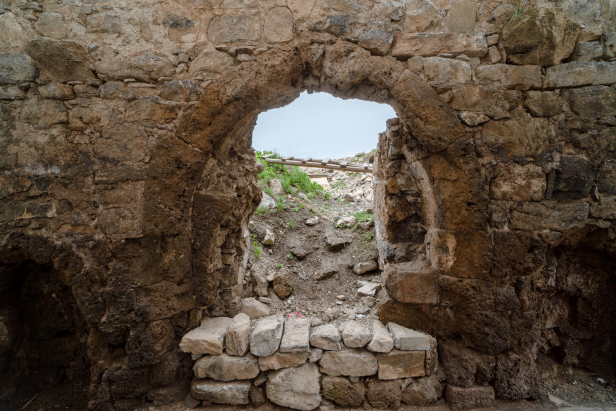
The church building is in a state of ruin with only the the outer walls remaining, though these too are in a dilapidated state. The inside is filled with rubble and garbage making it difficult to make out the interior layout of the structure. In the west wall, the arched doorway is still clear and flanked by a pair of niches on either side. In the east wall there are three windows, one to light the apse and the two on either side were likely in the side chambers as was common with the Armenian churches of this area. The only doubtful element here is the lintel of the central window in the east wall which is wood. All but the smallest and most crudely built churches had stone lintels, making it rather unusual for a church of this fair size to have such a poor element.
Surp Hovhannes of Sorp / Surp Garabet of Sorp- Free
The church of Surp Hovhannes is the only remaining structure of a monastic complex that was built a short distance outside of the village of Yelkenli. According to locals there had been another pair of churches in the village which sits on a picturesque headland that curves into the lake forming a sheltered bay and gentle slope of farmable land. Nothing remains of the other churches, though a pair of large Khachkars can be found in the “Y” of the village street where they have been used as pavers.
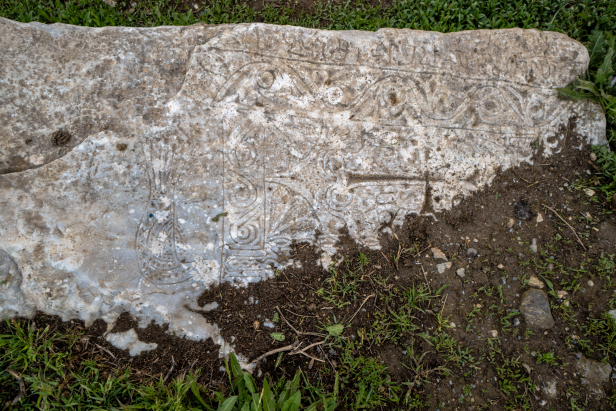
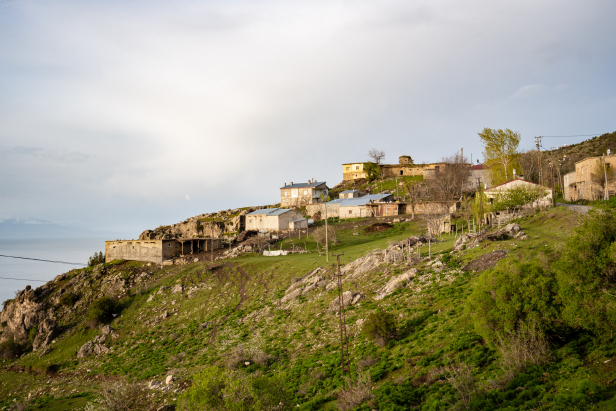
The church itself is on the eastern outskirts of the village set on the top of a gentle rise. A cluster of other buildings have been built against the church (you will need to enter through one on the north side to access the church itself). The lintel over the door is a particularly fine Khachkar. The interior is a simple long barrel vault supported by ribbing and the walls are supported by piers and blind arches. The masonry is a blend of brick and stone.
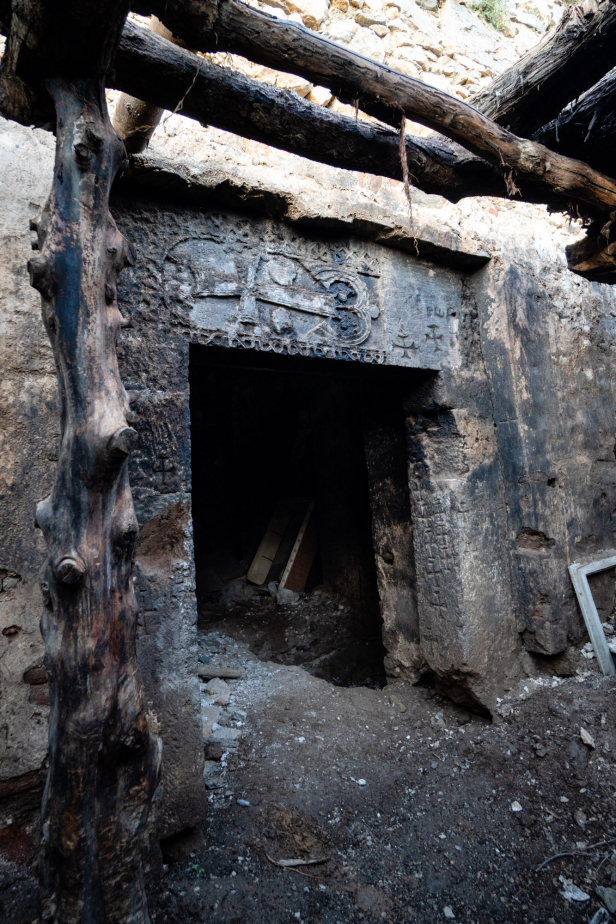 (Some sources list the monastery as Surp Karapet/Garabet and Surp Hovhannes being the name of a saint monk who lived at this monastery. It’s possible that the monastery took the name of the saint later or that one of the churches was named for him while the monastery itself was still known as Surp Garabet.)
(Some sources list the monastery as Surp Karapet/Garabet and Surp Hovhannes being the name of a saint monk who lived at this monastery. It’s possible that the monastery took the name of the saint later or that one of the churches was named for him while the monastery itself was still known as Surp Garabet.)
Subscribe to The Art of Wayfaring
Surp Asdvadzadzin of Pashavants/Paşavants- Free
The little hamlet now known as Paşaelmalı is home to an incredible medieval church dedicated to the Mother Mary. The Church of Asdvadzadzin is a simple yet large rectangle without dome or wings. The broad space is made high and narrow by a set of interior buttresses bridged by deep, niche-like spaces capped with barrel vaults. The main aisle is topped with a higher barrel vault that runs into an arched wall that separates the nave from the apse. There are small chambers on either side of the apse which are entered by the niche-like wings of the nave.
On the exterior there is a great amount of heaped rubble and earth obscuring any other ruins that may have been connected to the church. There are fine inscriptions and khachkar on the outer walls, though much of the north and south walls have fallen into disrepair with the outer facing stone having fallen away. The eastern and western facades are in far better condition and made of more substantial masonry. There are the remains of an outer wall running westward off of the northwest corner of the building with a doorway through it. The lintel is a massive block of off-white stone, carved with fine patterns. Exactly what this wall was a part of is unclear.
According to a news article published in 2013, the local landowner has been trying to get protected status for the church. Whether or not his efforts have been successful is not clear. The roof is badly overgrown with shrubs, the roots of which dig deep into the masonry and pull apart the centuries-old masonry.
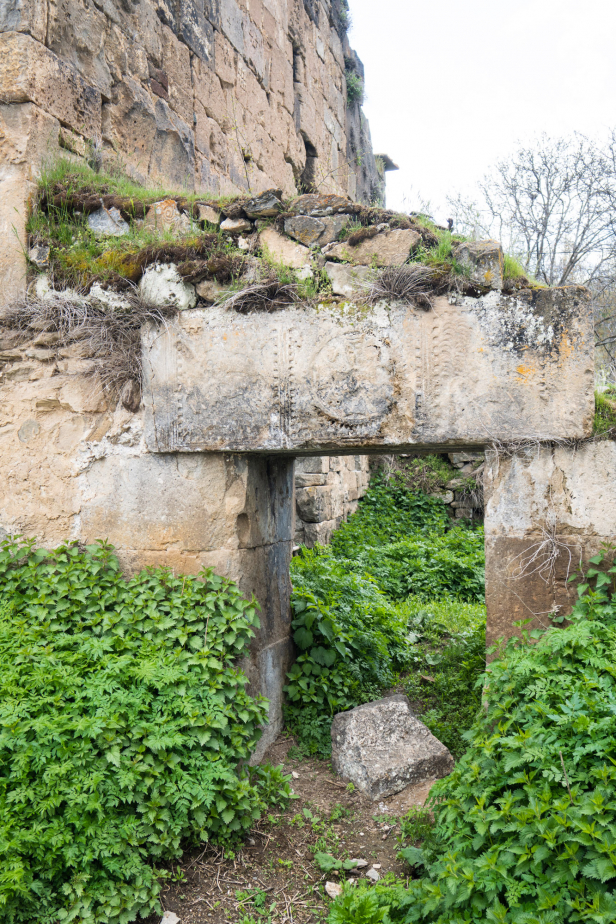
The village of Paşaelmalı is just east of the village of Tokaçlı, just north of the Van-Tatvan highway near Tatvan. The church is unmistakable, a large stone building in the tiny hamlet.
Cave Church of Por (also Bor, or Por Ziyaret) – Free
If you continue driving east along the coast from the village of Tokaçlı and the unmarked village of Paşaelmalı (see the above Surp Asdvadzadzin of Paşavants) you will eventually reach the hamlet of Por (also known as Por Ziyaret, named for its shrine and to distinguish it from the village of Por near Bitlis, also known as Değirmenaltı, which is home to some fine Armenian khachkar stones). At the far end of the bay are a number of caves cut into the rocks and a small mosque. The history of this place appears to be little known and the origins of the caves unclear.
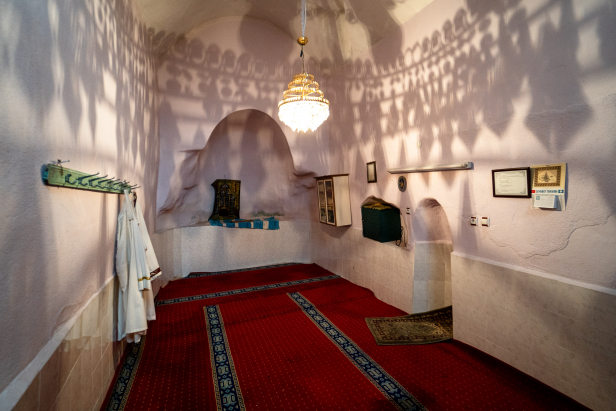
At least 500 years ago, a mystic known as Sheikh Hussein came to live in the caves of this isolated peninsula. Sheikh Hussein was a direct descendant of Abu Bakr, first Caliph and ruler of the Islamic peoples after the death of the prophet Muhammed, and his caves have become a minor pilgrimage site with people coming to offer animal sacrifices.
According to the official documents on the wall, the site has been in use as a mosque for at least 500 years. However, the innermost room of the mosque was originally a cave church with the apse in the east wall still obvious and a more recent mihrab carved into the south wall.
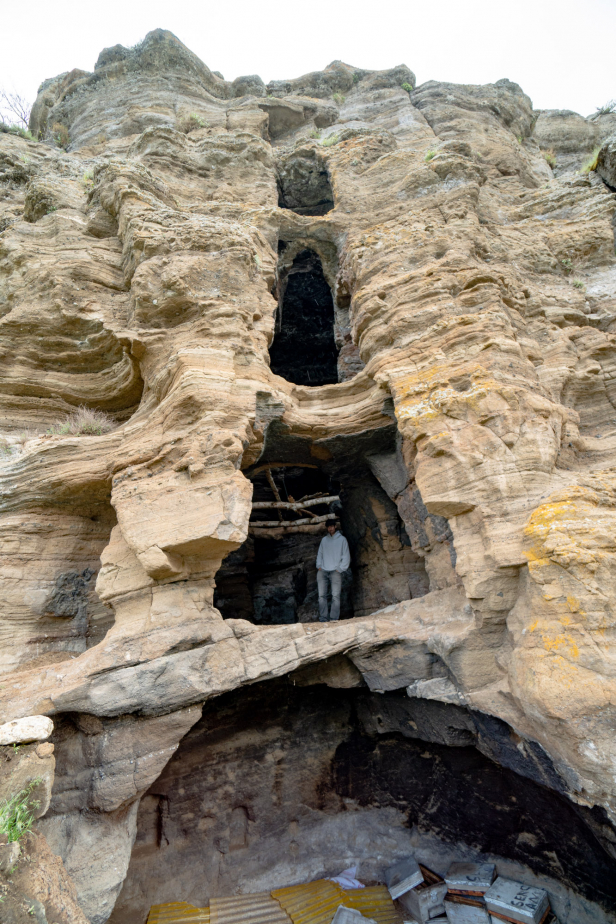
Surp Sarkis – Free
According to locals, there had once been at least two churches in the village of Hanelmalı though today there is only one. The church, believed to be the Church of Surp Sarkis, was built by carving it into the hillside above the modern village. It consists of a simple, single, small hall topped by a barrel vault which is supported by stone ribs. The ribs rest on half pillars rather than on the more commonly used masonry piers. Perhaps most interesting is the floor of the apse being a full meter higher than the nave floor. There are numerous inscriptions and khachkars in the exterior wall of the little church.
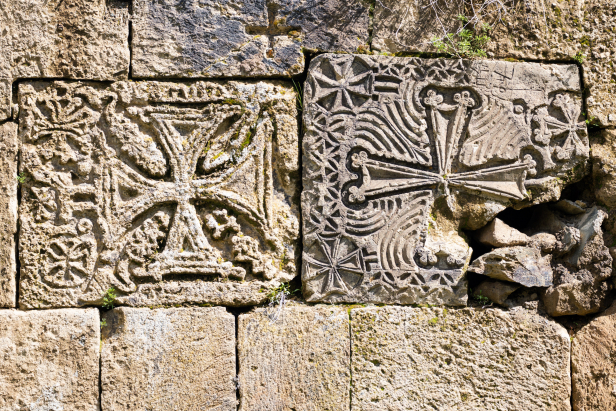
The Church of Surp Sarkis can be found in the village of Hanelmalı, just east along the coast from Tatvan. The church sits just above the village, a little way beyond the mosque. Google Maps puts a Surp Sarkis church in the hills between Hanelmalı and Çevre, though we could find nothing in that area and locals assured us there was no church in that area.
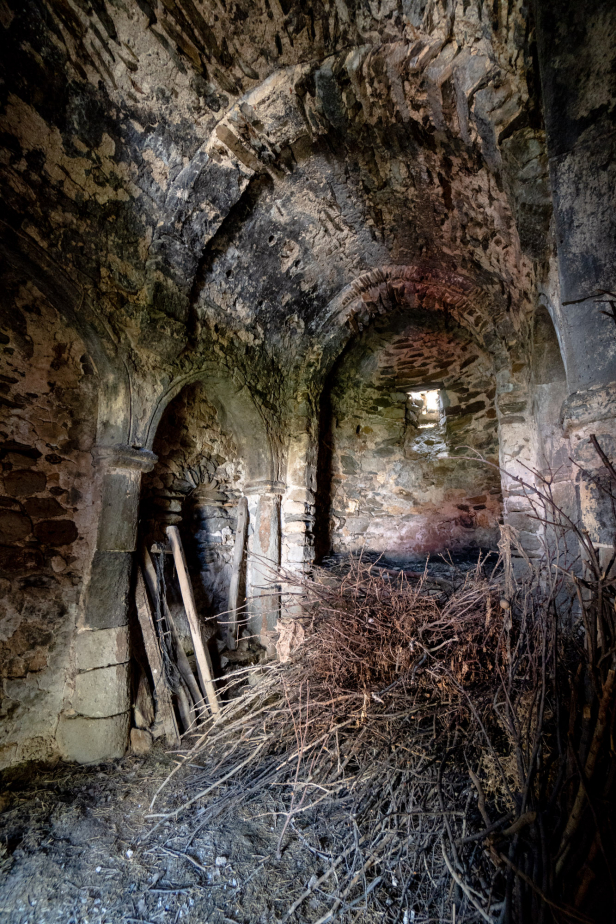
Subscribe to The Art of Wayfaring
Monastery of Surp Tadeos (St Thaddeus) near Sogurt/Soghurt Village – Free
On the skirts of Mount Nemrut (known as Sarak in Armenian) above the village of Serinbayır (historic Sogurt/Soghurt) there is a remote church, set dramatically against a backdrop of the ancient volcano’s upper peaks. According to J. M. Thierry who did an extensive survey of Armenian sites in the region, the church was named for Surp Tadeos (St Thaddeus).
The church was built directly onto the bedrock which runs like a sheet atop a layer of softer stone. The church is built atop this shelf making for a dramatic location but an unstable foundation with the south-east corner now suspended in air as the bedrock has collapsed away. The natural erosion of the rock has likely been helped along by looters and shepherds who have hollowed out shallow shelters for their animals. There is also a small tunnel cut under this shelf, running beneath the church.
The church itself is a simple rectangular space, barrel vaulted with a rib creating separation between the nave and apse. There are narrow windows in the east and west walls, looking out over the lake and back towards the mountain respectively.
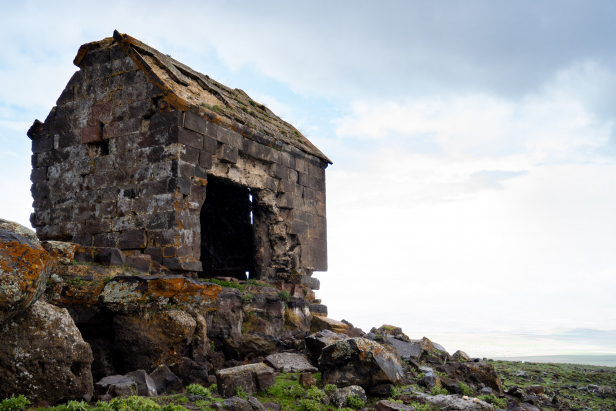
Rather interestingly, the door was built in the western corner of the south wall rather than the western wall. While a large portion of the south wall has collapsed, taking the right side of the door with it, you can still see the door jamb, carved ornamentation, and inscriptions that once surrounded the door. The odd placement of the door, right above the cliff may have been to allow easier access from the caves below rather than from the flat space on the west side of the church.
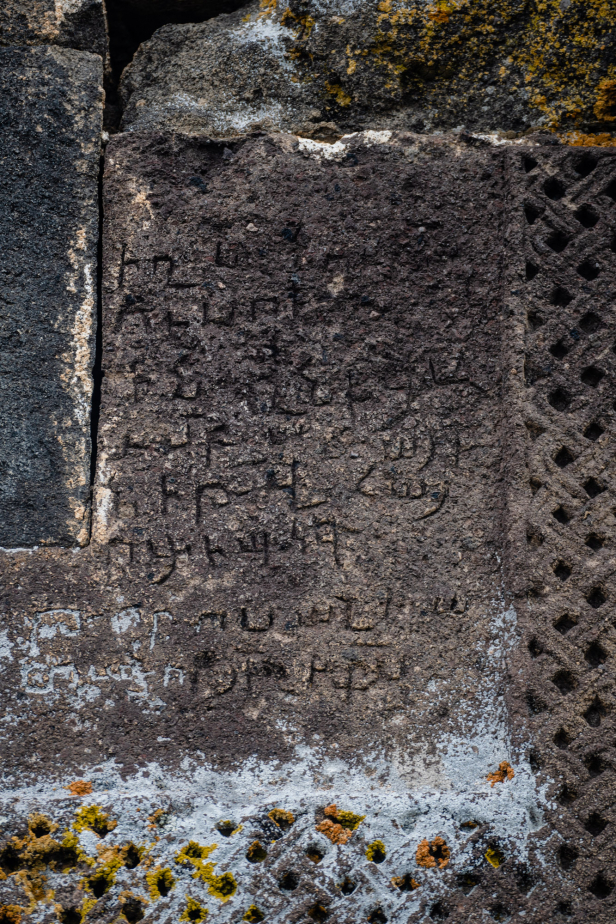
The church was built of high-quality masonry with large regular stones making up the entire outer and inner face, a fact that has likely helped the church survive in the harsh climate and with unfavorable foundations.
The village of Serinbayır below was once home to at least two churches, though these were long ago torn down. Khachkar stones can be seen used in various walls around the village.
To reach the church, you will need to drive to the village of Serinbayır which is above the villages of Taşharman and Saka. Bypass Saka on the main road, drive around the edge of Taşharman, and up to Serinbayır. From Serinbayır you will be able to see the church above you to the west though finding the right road is very difficult. Go to the north of the graveyard on the north-west corner of the village and follow the track west as far as possible. Unless your car has good clearance, you will need to walk the last few hundred meters.
A special thanks to Virtual Ani for passing on the information regarding the possible identity of this little visited church.
Surp Teotoros Sarıkum – Free
The village of Sarıkum is set on the west shore of Lake Van and according to the locals was home to a now lost church or monastery. A short drive north of the village of Sarıkum, up a sandy village track, is a small peninsula where the church is thought to have been. There are a few stones, mostly buried that may have been a foundation, as well as some incredibly faint crosses etched on a rocky outcropping nearby. Beyond these the only other clue that this may have been a church site is the many looters’ pits dug around the peninsula. According to locals there had been other rock etchings and carvings, but these had been chipped out by looters looking for treasure in the virgin rock behind the crosses. In the village of Sarıkum itself, there are Khachkars used in the walls of newer stone buildings.
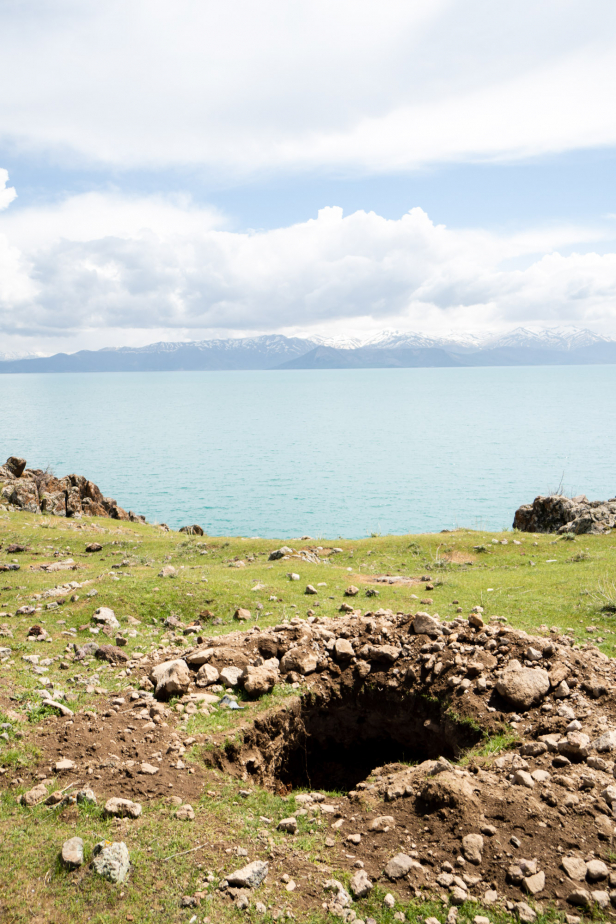
According to Google Maps the church is known as Surp Teotoros (Saint Theodoros), though whether this is true or not is unclear.
Ardzgue, Skantselagorgivank – Free
The western side of the town of Adilcevaz runs up into a valley, over which looms a high, cliff faced rock where the Urartu Kef Castle was built. Across the narrow valley to the west of this spur, set on a platform atop a lesser spur are the remains of a once sizable Armenian monastic complex.
The monastery takes its name from the historic Armenian town of Ardzgue, now known as Adilcevaz though it was also known as Skantselagorgivank, meaning “The Monastery of Miracles” in reference to a relic held in the monastery that brought healing and was believed to have been the basin that the infant Jesus was washed in.
Today only the church is left standing, the outer walls and monastic buildings reduced to well defined lines and cells of rubble. The church occupies the south-eastern corner of the complex at the brink of the hill where it must have been a stunning site from below before it was ruined.
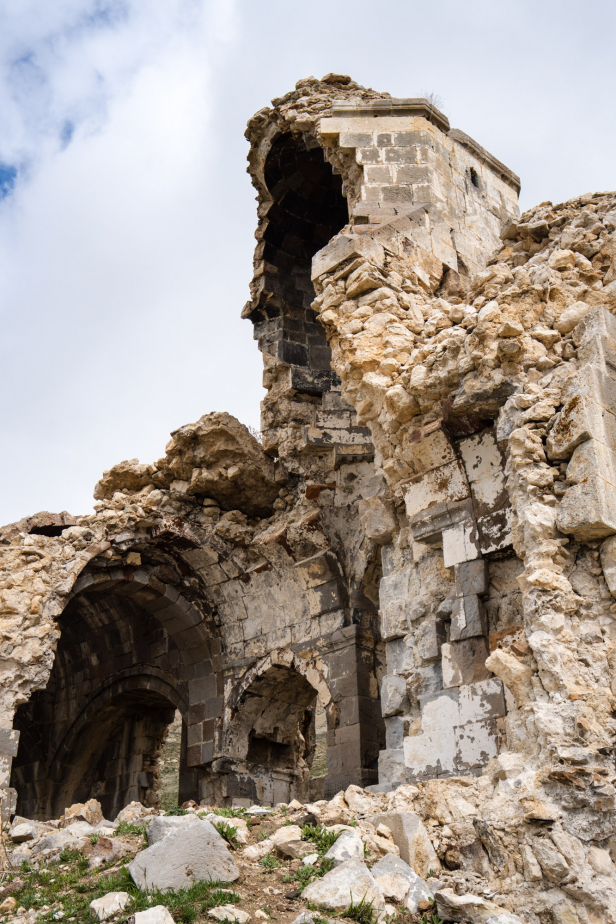
Built in two parts, one the primary church with its tall cupola dome, and another section to the west, built at a later date. The joint in the masonry is obvious in the north wall. While it is common for a zhamatun (narthex) to be added at later dates, this addition may have been an expansion of the church as the transition is a wide arch rather than a doorway.
In the main church the high cupola dome sits on a set of plain squinches which transfer the weight to the wider hall below. In this case the weight is transferred onto the ends of the apse as well as a pair of pillars. The pillars are topped with a capital of shallow muqarnas, similar to those on the upper portions of the Ahlat gravestones.
While much of the church is still standing, it is in a state of impressive ruin. The majority of the south wall is gone as is the southern portion of the dome and drum. There are gaping holes in the north wall and only a small portion of the outer facing stones have survived in place. Without protection the entire structure could be lost soon.
There is no road to Skantselagorgivank, though the route to the site is quite simple as you can see it from a distance. In Adilcevaz, head into the far northwest corner of the town, which works its way upwards into a valley with a creek and water reservoirs in it. Park at the end of the gravel road and follow the creek up the valley to the monastery which will be visible above you.
Subscribe to The Art of Wayfaring
Yukarısüphan Church – Free
The village of Yukarısüphan takes its name from the nearby volcano Süphan which towers dramatically over the region. While the sizable village was once home to a number of churches, all that remains today is the skeleton of a single church. The roof and western walls have been lost and only the nave and most of the north and south walls are left standing. The name of the church is unknown and, lacking any surviving inscriptions, may be difficult to find.
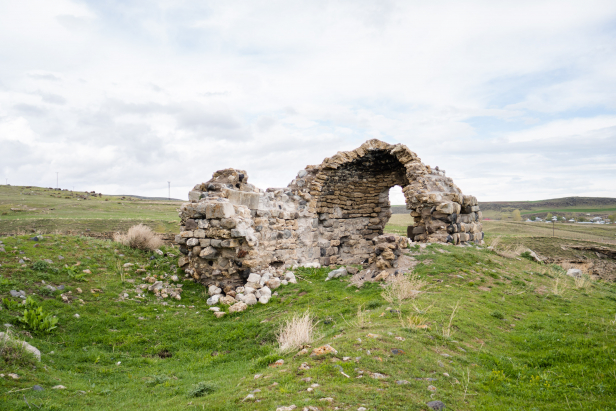
The village is full of reused carved stones, with crosses peeking out almost everywhere you look. While most are crude and simple, there is a good number of finely carved stones as well. According to a local, the stream that runs through the village used to serve the village mill. The stream, which is high in calcium and faintly smells of sulfur, has left something of a wall where it once ran through a sluice and onto the water wheel (this information was paired with a story of “a man from Germany” who came with a device that detected gold near the creek. When locals dug they found nothing. As such this information should be considered suspect).
The remaining church can be found a hundred meters or so on the right side of the road, standing alone in a field. As you climb the slope below the village you will be able to see it on your right.
A special thanks to Virtual Ani for supplying me with a map showing the likely locations for a number of the sites listed above. Visit his site for excellent, in-depth guides to numerous Armenian sites around Turkey with a special focus on the magnificent City of Ani.
How To Get There
General
While a handful of the sites are accessible by using public transit and taxis, the vast majority of these can only be reached by car. While some of the churches will be easier to reach with a 4×4, there are still many that will require a bit of hiking.
For more on driving and renting a car in Turkey read our full Driving Guide.
Where To Stay
Considering the beauty of this region and the long list of sights the hotel industry is shockingly underdeveloped. Van is the only city with a decent selection of hotels. Beyond that Bitlis, Erciş, Ahlat, and Tatvan all have a hotel or two to choose from. Beyond that you may have to camp or stay with locals. The nicest hotels can be found in Van city center or in Edremit along the lake side.
Other Tips
Weather in this area can get quite cold and snowy from December to March. March and April can be a bit unpredictable so bring clothing and footwear for all weather if you plan on visiting during these times.
In the early spring (often around mid April) the mountain peaks are still white with snow, the lower slopes green, and the almond trees in the villages are full of pale pink flowers. Akdamar Island is particularly stunning in this season.
The locals of this region are quick to suspect outsiders of being treasure hunters and looters. If they call the police remember that this is a good thing and, whether out of good motivation or wanting to keep the treasure for themselves, they are protecting these historic buildings. The easiest way to prove that you’re not a treasure hunter is to not have shovels and picks with you, and take a camera. We were stopped regularly but there was never any issue.
Planning on visiting any Armenian churches around Lake Van? Make sure to check out the rest of our guides to the many sights of Province of Van and the Province of Bitlis!
Subscribe to The Art of Wayfaring
Have any tips or info to add? Spot any mistakes? We’d love to hear about it.
